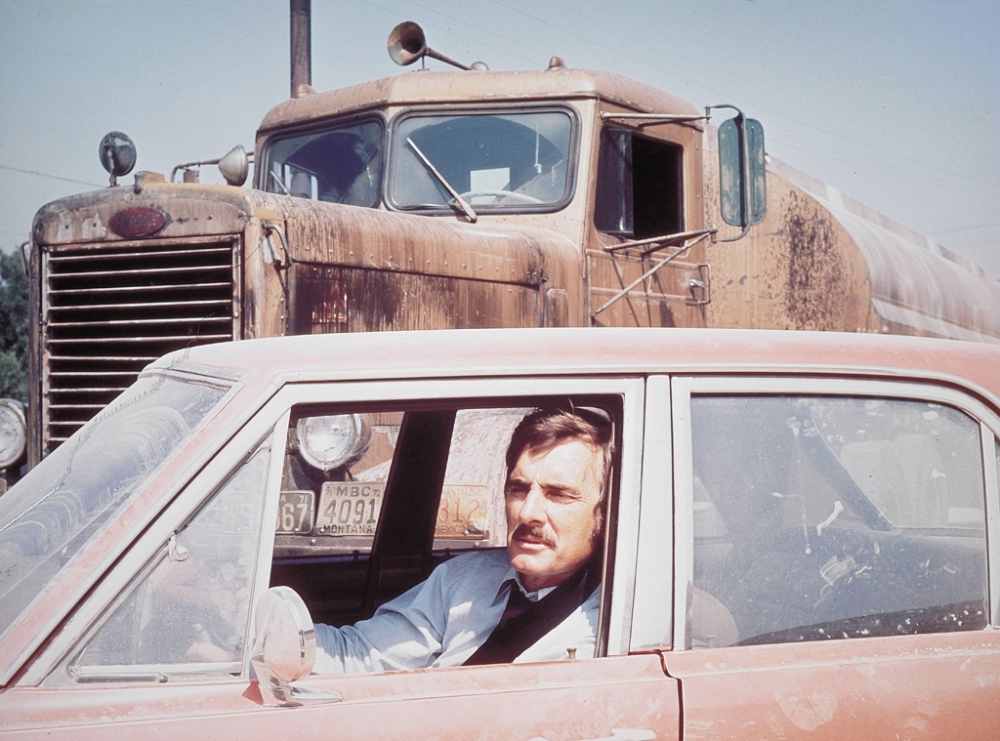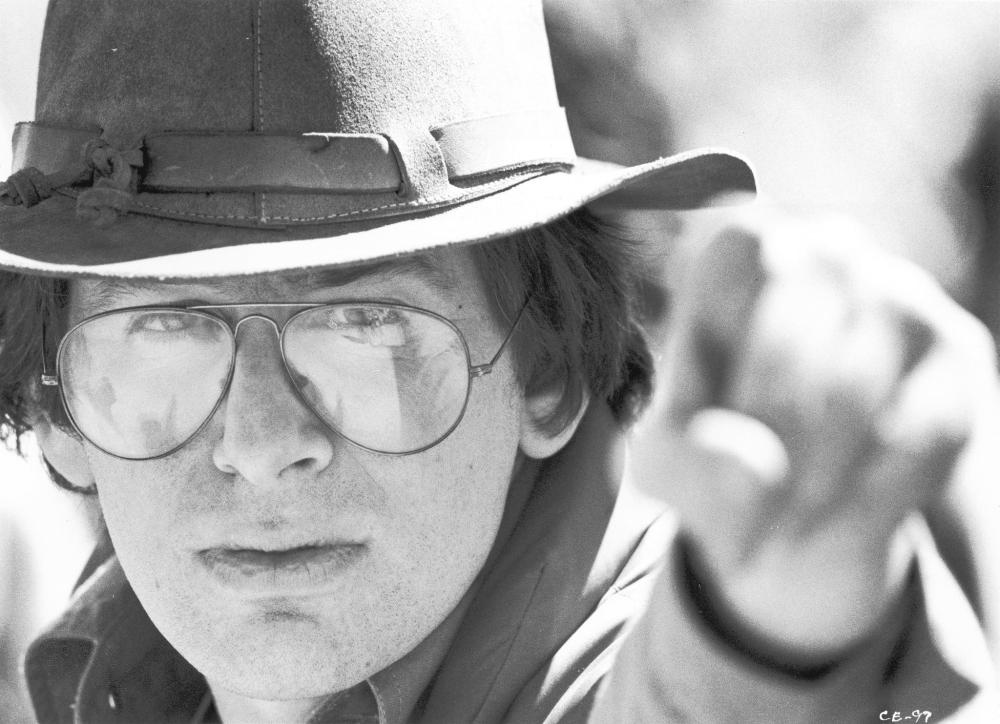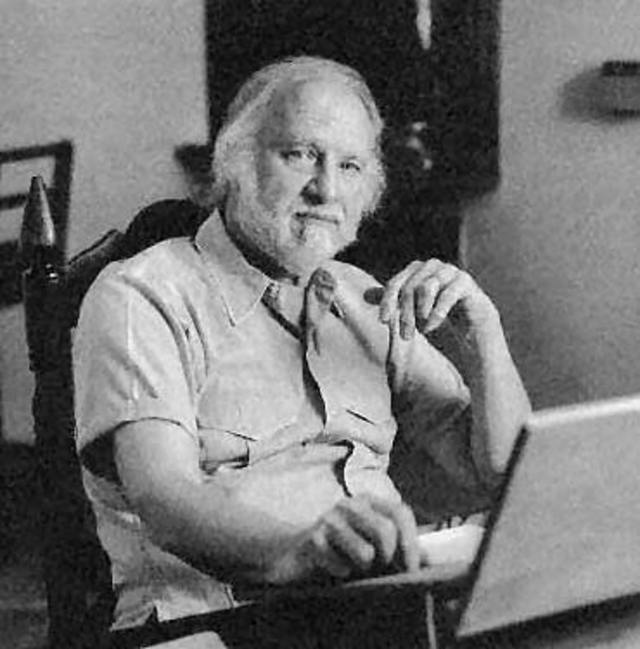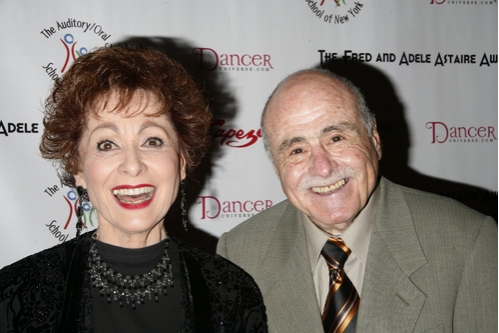There’s a stretch of commentary, attributable in this case to writer Robert McKee, that says that the simpler a story is, the more interpretations it will foster.
Director Steven Spielberg’s 1971 television, later feature, film, Duel, is that sort of movie: one man is chased by one truck down a stretch of desert highway and people interpret it several ways.

Please note the film’s stars, core acting pair, and much, much more pictured above.
That being said, let’s move on to the direction…

Apart from the Spielbergian trademarks which fill feature in a few lines, Duel, is extremely focussed-ly directed in that, once the truck makes its near-homicidal predilections known and shown, there is nothing on screen that isn’t related to Dennis Weaver’s David Mann’s first escape from, then pursuit of, and later defeat of the said truck. No budding or developed character subplots, little in the way of bombastic music or even mechanical failure (until the end, anyways) to distract from David’s plight.
Please wait until the screenplay commentary for the inferences in Duel; reverting back to topic the following directorial trademarks, as carried forth into his later films, may be found in Duel:
- The, admittedly not as, strained family unit: David’s telephonic conversation with his wife over her office party-born frustrations with him, as framed in the washing machine door (more on that later), and that with the gas station owner – ‘you’re the boss‘, ‘not in my home I’m not‘ – echo some rifts in the Mann household regardless of the society-wide feministic tensions suggested by other commentators.
- Over-the-shoulder cinematography: David often sees the truck in similar photography, looking over his shoulder as he does and the truck often looks at him in similar ways, its wing mirrors and driver’s cab dominating the foreground as is the case in such shots.
- A proto-Spielberg face: David’s shocked expression during his first bumper-to-bumper chase with the truck may be seen as the first variation on the Spielberg face.
- Framing characters through foreground objects: as discussed by LAVideoFilmmaker.com, and as seen when David is speaking to his wife, Duel uses that variety of shot composition.
- Somewhat more subjectively, a necessarily un-humanised antagonist: While perhaps not distinctly a Spielbergian trait – the Xenomorph in Alien certainly disagrees – the truck in Duel is malevolently homicidal simply because it is, sans any exposition why; the shark in Jaws and the velociraptors in Jurassic Park certainly were in the same mold too, as stated by Ian Freer of EmpireOnline.com.
Slightly even more subjectively, there isn’t much in the way of an optimistic undercurrent in this film, mostly just paranoia and anxiety instead.

The adaptation for the small and big screen, courtesy of author Richard Matheson, lends itself to a three-act system with breaks between action at the first gas station, Chuck’s Café and the second gas station; only Chuck’s Café appears in the book. Barring that, the adaptation is largely faithful to the original story which you can read for free via Google Books here and adds, inadvertently or otherwise, value by means of simplicity in the class warfare/feminism-fuelled societal upheaval/limited scope of societal values beyond the metropolitan interpretations that have been published since its release.
Alluding to the book somewhat, Duel is an indictment of materialistic values as David repeatedly alludes to treating himself to expensive whisky and other material pleasures as soon as he reaches San Francisco.

At the risk of reusing photography for want of better Internet, the picture above captures both halves of Duel‘s acting duo: the paranoid and threatened David Mann, played by Dennis Weaver, and his inexplicably homicidal truck counterpart. Drawing a little more revealingly or ill-advisedly from personal observation, David’s descent from paranoia to mental implosion to borderline-violence and, ultimately, suffering seems in keeping with what mentally-frayed people under relentless bullying, vehicular or otherwise, might do.

The score, courtesy of composer Billy Goldenberg, is suitably held-back except when truck or circumstance warrant it. It has some thrilleresque musical surges in the appropriately chilling parts but, for want of a separate listen, little else comes to mind.
The cinematography, courtesy of Director of Photography, Jack A. Marta, (please pardon the lack of a suitable photograph) uses a mixture of what would be Spielbergian over-the-shoulder photography, some silhouette shots and some proto-videogame-esque photography in how the vehicles appear in perspective to each other. More specifically, there’s an especially revealing shot in Chuck’s Café where the truck rests in the background, seen through a window, and a depressed David rests on the table in the foreground with the café’s ‘Open’ sign silhouetting over his table.
With a tad more simplicity than Duel warrants, Duel is an engaging film whose simplicity of premise and execution (and psychological complexity of its sole protagonist) work to its advantage. At times more shocking than 1975’s Jaws, 1971’s Duel is a film that, in this commentator’s admittedly limited experience, is hard to beat for tension and thrill.
(While the opinions and observations cited above are the author’s own, the following sources were used to acquire facts: Books. Google.ae, Classic-Horror.com, EmpireOnline.com, HorrorNews.net, IMDb.com, NYTimes.com, ReflectionsOnFilmAndTelevision.Blogspot.ae, SensesOfCinema.com, Seul-Le-Cinema.Blogspot.com, TIME.com)
Plot and Act-by-Act Breakdown:
Plot: a travelling salesman seeks to defeat the tanker truck stalking him on the highway.
Prologue: a point-of-view filmed take on life on the road, as David Mann sets out from the city, seen from the car’s point of view.
Act 1: David chooses to overtake the truck for the first time and the truck retaliates in kind; David eventually chooses to pull into a gas station.
Act 2: David chooses to offer the truck room to overtake him; David later decides to go off-road to overtake the truck but winds up in a chase with it instead; he chooses to enter Chuck’s Cafè after his car spirals out of control.
Act 3: David chooses to leave the cafè toilet; he chooses to confront the wrong man whom he thinks is the truck’s driver; the real truck leaves soon after.
Act 4: David chooses to pursue the truck but loses it on foot; he later decides to stop and help a stalled school bus.
Act 5: David chooses to flee when he sees the truck approaching in the distance; he chooses to stop at a railroad crossing but escapes before the truck can push him into the speeding train.
Act 6: David chooses to stop at another gas station and decides to call the police; David manages to escape before the truck can destroy the gas station and later decides to wait off-road until the truck drives off.
Act 7: David chooses to drive again after waiting deciding that he’s waited long enough; he decides to stop the car after seeing the truck waiting for him ahead.
Act 8: David chooses to flag down an incoming car; he later decides to escape the truck on foot as it reverses into both his and the other car.
Act 9: David decides to accelerate ahead of the truck; he decides to switch to neutral gear after his radiator hose blows.
Act 10: David decides to crash his car into the oncoming truck; he decides to rig his briefcase to keep the accelerator pressured and jumps out of the car.
Epilogue: David marks time by hurling pebbles into the canyon containing both destroyed vehicles.